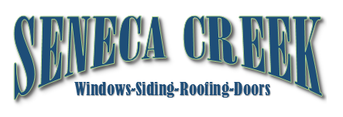Gaithersburg Roofing: Article About Flat Roofing Options
Joists are long pieces of wood, steel or concrete that are laid horizontally on top of larger roof beams. They are used to support roof decking and roof materials. Floor joists also support floorboards.
Gaithersburg roofing FAQ: Is rubber membrane used for anything other than roofs?This synthetic rubber is also used in door and window seals, hoses, pond liners, washers and electrical insulation. Colored EPDM granules can be mixed with polyurethane binders and then shoveled or sprayed onto concrete, asphalt, interlocking brick or wood, to create a soft, porous, non-slip safety surface for areas like pool decks and as safety surfacing under playground equipment.

Flat roofs can be more cost efficient than other types of roofs. One reason is that they have a smaller surface area than pitched roofs, so less material is needed. They're ideal for solar panels and roof gardens as well. They can even provide additional storage, tennis courts, or space for a deck or patio. The right Gaithersburg roofing professional can help homeowners choose the best flat roof for their home.
A traditional hot tar and gravel roof, also called a built up roof, is the most common, least expensive type of flat roof. It is made from three or more layers of waterproof material alternated with hot tar. The top layer is smooth river stone or gravel, which is attractive and fire resistant. Some disadvantages are that joists may need to be strengthened to support the extra weight and the gravel can clog gutters. These roofs were once made of tar paper that is messy and smelly to install, but more are being installed using advanced materials like fiberglass membranes.
Modified bitumen is a type of tar with rubber added to form lightweight asphalt.
The roofing experts at Seneca Creek Home Improvement of Gaithersburg MD can assist you with any questions regarding roofing, gutters or siding.
It comes in a large roll made for flat roofs that's impregnated with a mineral based wear surface. Older systems involved heating the adhesive with a torch as the material was unrolled, but this is a fire hazard and not recommended for occupied buildings. Newer peel and stick systems are safer and easier to install. The material makes it simpler for homeowners to do their own work, and it's resistant to scuffs and tears. Special lightly colored coatings can reduce energy costs by reflecting sunlight. Homeowners can also choose a style that looks like metal, liquid or darker asphalt.
Rubber membrane is also called ethylene propylene diene monomer or EPDM. The durable material resembles an inner tube, and it's engineered to resist damage from sunlight and tearing. It's easy to install and repair. However, it's more vulnerable to punctures than other choices. Lighter, more energy efficient coatings, which are recommended in warm climates, add about one third to the cost. Even the standard black version costs more than other flat roof options. EPDM can be anchored with fasteners like nails, weighed down with stones or glued. More than one method can be used for extra safety. These roofs are particularly resistant to bad weather like hail and hurricanes. They're also fire resistant, and the rubber stays flexible in cold weather.






